Ryan Hall's Blog, page 124
September 28, 2017
The Couple Running 100 Rock ‘n’ Roll Marathon Races Together
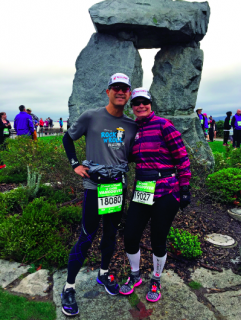
Ron Carino wasn’t planning on making every other partner on the planet look wildly inadequate when he popped the question to his wife, Susan. It just sort of happened. No, not that question. He’d asked that one more than 20 years ago.
This particular question was at the 2015 Humana Rock ‘n’ Roll San Antonio Marathon & ½ Marathon. On bended knee, Ron asked: “Will you run the next 100 half marathons with me?”
With more than 100 half marathons completed as a couple, the pair will join an elite group at the Rock ‘n’ Roll San Jose Half Marathon Oct. 7–8 when they become the eighth and ninth people to participate in 100 Rock ‘n’ Roll Marathon Series events. Ron will be the seventh male to reach the century mark. Susan is the second woman.
RELATED: Expert Advice On Choosing The Perfect Rock ‘n’ Roll Race
The two met while at the University of Wisconsin-Madison. Ron had declared to his family that he was going to graduate school to find a wife. And in fairytale fashion, he spotted her across a fi eld and knew.
“What can I say, I was confident,” Ron says.
Though they married in 1995, they didn’t discover their combined love for running until a decade later. Their first Rock ‘n’ Roll marathon was in 2006 when they connected with a Team in Training group in San Diego.
Since then they’ve completed Chicago and San Diego eight times, managed to run the San Antonio and Las Vegas races on the same day, and renewed their vows three times at Las Vegas. They currently do 16 Rock ‘n’ Roll half marathons a year and usually one marathon.
RELATED: Meet The 23 People Who Are Running Their 40th Rock ‘n Roll Philly Race
No matter what happens in the middle of the race, they always finish together.
“There’s Ron waiting for me at mile 13,” says Susan. “We always start together and he’s ahead of me. He’ll turn around at mile 13 and stop and wait, so we can finish at the same time. Sometimes he’ll climb up on the separator in the roads and he’ll wait for me. He does it consistently and it gets my heart every time.”
The post The Couple Running 100 Rock ‘n’ Roll Marathon Races Together appeared first on Competitor.com.
Meb Reflects On His Legacy and Approaching Retirement

On Nov. 5, Meb Keflezighi will be running his final race as a professional distance runner at this year’s New York City Marathon. It will be the 26th marathon of his decades-long career in the sport and a return to the first marathon he ever ran in 2002. As one of America’s greatest marathoners, Meb still remains the only runner in history to win an Olympic medal and victories at the New York and Boston marathons. In this interview he shares the top five highlights of his impressive career, what he hopes his legacy will be, and his plans for life after retirement.
RELATED: America’s Greatest Marathoner Prepares For His Final Race
The post Meb Reflects On His Legacy and Approaching Retirement appeared first on Competitor.com.
This Earpiece Can Connect Runners Anywhere In The World

Can you hear me now? Runners aren’t a super chatty bunch—every breath counts—but this new earpiece technology could change the way we communicate with one another on the road or trail.
How does it work?
The Bonx Grip earpiece ($140) enables group communication with up to 10 users anywhere in the world. It uses Bluetooth technology on your phone, and the Bonx app taps into your cellular reception to connect everyone in the same chat room. Precise voice detection helps distinguish human voices from outdoor noises. And because the earpieces are meant for active users, its hand-free design is both shock-resistant and waterproof. A grip-like ear hook ensures it stays on your ear during the roughest activities.
RELATED: 3 Apps Helping Runners Stay Connected And Inspired
Why should runners take note?
This device could be particularly helpful for runners who need to stay connected. For example, during ultras and marathons, runners and their support crews can check in throughout the race. Running groups can chat away with ease without having to stay on pace with one another. It could even be used as a training device for coaches on the track, providing live—and private— feedback. We’re buzzing with creative ways to use it.
RELATED: 3 Tips To Run Safe With Headphones
The post This Earpiece Can Connect Runners Anywhere In The World appeared first on Competitor.com.
Over 5,000 Runners Who Qualified To Miss Out On Boston Marathon

Photo: Steve Godwin
The entry period for the 2018 Boston Marathon is closed and the Boston Athletic Association reported that they received 28,260 total applications. Currently, 23,198 have been accepted or are in the process of being accepted.
This means that 5,062 who were eligible and applied for the 122nd Boston Marathon—taking place Monday, April 16, 2018—were unable to be accepted. The field size is set for 30,000 entrants, including elites, those who qualified and charity runners.
RELATED: 12 Fast Facts About The Boston Marathon
Each year as the number of qualifiers grow—along with the number of applicants—it becomes harder and harder for runners to get into the Holy Grail of races. Many runners who meet the qualifying standards for their age group often don’t get accepted due to the large number of runners attempting to get in based on a rolling application basis. This year, qualifiers had to be 3 minutes, 23 seconds (3:23) or faster than the qualifying time for their age group and gender to be accepted into the 2018 Boston Marathon.
You can compare this to past years, where qualifiers needed to be 2 minutes, 9 seconds or faster for their age group and gender for the 2017 Boston Marathon; 2 minutes, 28 seconds or faster for the 2016 Boston Marathon; 1 minute, 2 seconds or faster for the 2015 Boston Marathon; and 1 minute, 38 seconds or faster for the 2014 Boston Marathon.
RELATED: Where To Qualify For Boston
“Each year, thousands of marathoners across the globe aspire to qualify for, compete in, and ultimately finish the Boston Marathon,” said Tom Grilk, B.A.A. Chief Executive Officer, via press release. “For many runners, completing the Boston Marathon is viewed as the ultimate goal in athletics. Informing those who have qualified that there is simply not enough space for everyone in the field is immensely difficult. Our entire organization at the B.A.A. has worked hard to ensure a fair process that gives runners who have qualified the best opportunity to enter the Boston Marathon. We thank runners for their understanding, cooperation, and support of the Boston Marathon year in and year out. We recognize and applaud their determination to participate in the Boston Marathon.”
The post Over 5,000 Runners Who Qualified To Miss Out On Boston Marathon appeared first on Competitor.com.
Train For Two Races In One Weekend With This Plan


Whether you’re training for the Rock ‘n’ Roll Marathon Series, a Disney race weekend or any other half marathon that offers extra mileage with added races, here’s a plan that will help you prepare for all of the fun. Although the primary goal is the half marathon, there’s a fair amount of shorter work—both to prepare you for the remix 5K (or you could even do up to a 10K) and to help improve running economy/efficiency and overall muscular development. Don’t feel guilty for seeking out a minimal training approach with maximum gains. Dedicate yourself to this 12-week plan and you’ll get there.
Keep These Tips In Mind
Consistency is key. Don’t worry if some workouts don’t come together. Your primary objective should be staying committed week to week without any big swings with multiple days off consecutively. Before starting this plan, you should be running at least three times per week and able to complete 2–3 miles of continuous running.
One day at a time. Try not to focus on what you have 3 or 4 weeks ahead of you. That can make it feel somewhat overwhelming. The plan builds on itself week after week with the mileage, days per week and long run all included in that equation.
RELATED: Bouncing Back From A Bad Workout
Find the right effort. Different workouts require varying effort levels and intensities. This is one of the keys to making it to the starting line healthy and prepared for the mental and physical challenges that await. Easy runs should feel comfortable and controlled, and you should be able to hold a conversation with a running partner. Note that you may have days where you feel better than others—it is okay for your pace to shift slightly quicker or slower depending on how you are feeling. The pacing listed is based on your fastest effort being a 5K, then 10K, then half marathon (HM), then marathon and finally your easy pace.
Easy does it. The mileage builds gradually and enough to ensure you are gaining the necessary fitness. However, if you are feeling exceedingly motivated, you can always add a bit more mileage on the easy days. Don’t alter the long runs or workouts.
Cross-train with moderate intensity. Choose among cycling or spinning, swimming, water running and the elliptical. They should feel more taxing than an easy run but not so much so that you can’t recover for the following day.
Add strength training 1–2 times per week. This can be in the form of a weight routine at the gym or a 15-minute core session (at a minimum) on one of the easy recovery days or on a day off from running. A gym workout should focus on the upper body and not render you unable to run productively the next day.
Stretching is critical! This should become part of your daily routine. Plan on 8–10 minutes after your run or before bed.
The Plan
RELATED: Can I Push Hard For Two Races In The Same Week?
The post Train For Two Races In One Weekend With This Plan appeared first on Competitor.com.
September 27, 2017
6 Tips For Success From Professional Distance Runner Sara Hall
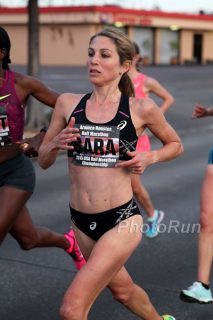
Photo: photorun.net
Below are some tips that Sara Hall has found helpful in achieving success:
1. Commit to The Journey as much as the goal. Maybe even more.
Great results come from repeating the basics well, over and over and over. Enjoying that process keeps you invested and motivated. Set up the journey by choosing a goal to give you vision. Do whatever it takes to keep it fun and fresh.
2. Build your journey from small, achievable steps.
You have your goal. Fantastic. Now you need a plan of attack. Write it down! Early on, check yourself. If the workload is too much, then dial it back. If you have more to give, push it a little bit at a time. Reaching your goal slowly is better than quitting, and overdoing it early is a top cause of giving up.
3.When things are going well, just keep doing what you are doing!
This is the most enjoyable part of the journey. You have momentum and are seeing flashes of progress. Great! Show up tomorrow and keep doing it. Mix in some races to break up your training and see some new scenery. Do not worry about the times. Just focus on finishing strong.
4. Celebrate successes.
Let every bit of forward progress be a point of personal pride, no matter how small. Whether it is a post-workout ice cream cone or massage appointment, we all do well with incentives and milestones. And when you hit a big goal? Celebrate it like the feat that it is! Document it in a training log or journal, and reflect on the things you did well to get to that point.
5. Pick yourself up.
So you melted down in that 10K—ugh right? When we get knocked back, when and how we respond are the most critical parts of staying on track. First thing is to get up and make some forward movement, no matter how small. What has worked for me at every level is to choose a new focus and start taking steps towards it, while celebrating progress along the way. More than my biggest accomplishments, it is these personal growth moments I look back on as the most meaningful times in my career.
6. Always be winning.
Finding the good in every training session is key to becoming a resilient athlete. You’re not going to feel good every day and crush every workout, but being able to identify what you did well and what you are enjoying about each day will bring meaning to each training session. Whether it is taking in the beauty of your surroundings to distract you from the effort or refusing to let your times affect your attitude, there is always an opportunity to learn and grow. Learning to find the good and positive in every moment to keep propelling you forward is the key to longevity in the sport.
RELATED: Patience Pays Off For Sara Hall At Freihofer’s Run For Women
The post 6 Tips For Success From Professional Distance Runner Sara Hall appeared first on Competitor.com.
New Survey Asks Runners About Their Biggest Pet Peeves

There are so many amazing aspects about running to enjoy. However, even the happiest runners have their pet peeves and bad habits. Reebok wanted to find out what exactly irks us the most.
The brand surveyed Americans, ages 16-44, who exercise weekly and run on a daily basis. In the process, they discovered some pretty funny statistics. For example, 46 percent of runners surveyed don’t shower before they meet up with friends.
Reebok also compiled a list of top 10 running pet peeves. Among the list, there were two answers that annoyed the majority of runners. Over three-quarters of respondents said they hate when other runners make it difficult to pass. And 71 percent of those asked get aggravated when people run too close to them.
The answers were not all bad though. Only 6 percent said that they prefer to ignore others when running. So at least most runners agree—a nod or a wave is the way to go.
Find out what the rest of the running pet peeves were in the gallery below.
RELATED: 8 Different Types Of Runners You Will Definitely Encounter
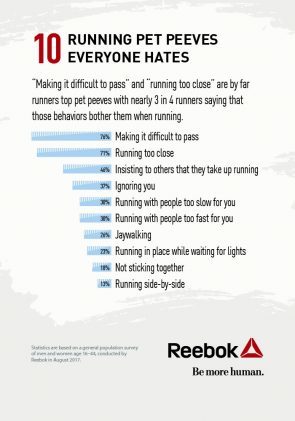
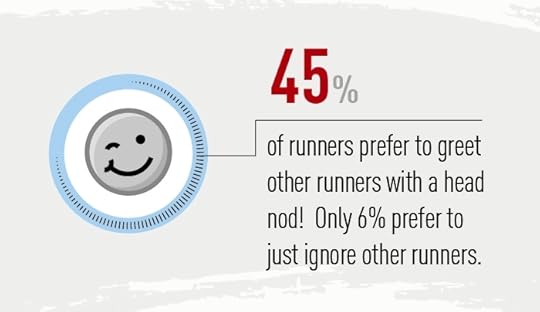
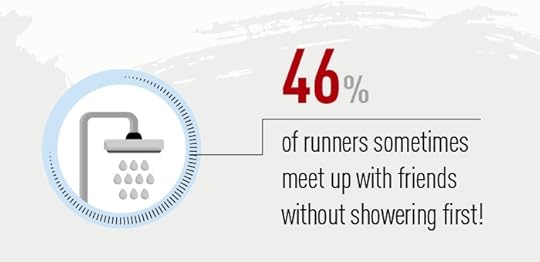
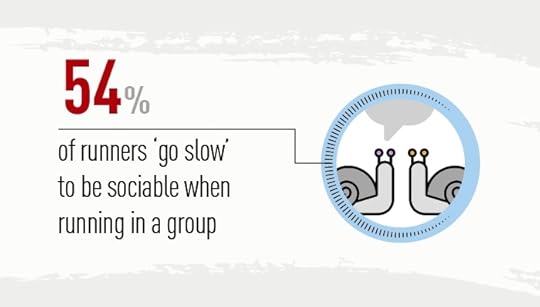
The post New Survey Asks Runners About Their Biggest Pet Peeves appeared first on Competitor.com.
Chef Ken Migneault On Feeding Runners Of The St. George Marathon
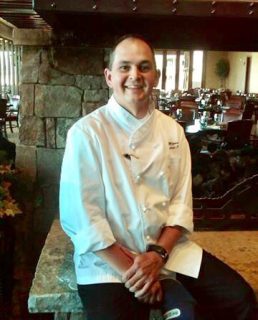
It takes a marathon effort for chef Ken Migneault and his team to get ready for marathon weekend in St. George, Utah. To feed the 2,000 people expected at the pre-race dinner, they will cook an impressive 250 pounds of pasta and 45 gallons of marinara sauce. They will also have 3,000 breadsticks and nearly 100 pounds of lettuce ready for the hungry runners and their families.
“We’ve never run out of food,” says Migneault, the executive chef of Heritage Catering, which has prepared the pasta dinner every year since 2009.
This year’s St. George Marathon will take place on Oct. 7.
In addition to leading pasta preparations, Migneault is in charge of special banquets for international runners, a group from Japan and 10-time St. George Marathon finishers. In total, Migneault and his dedicated crew will work almost around the clock to make meals for 3,000 people that weekend.
Migneault, 44, recently chatted with Competitor Running about his favorite dishes and what he does when he’s not in the kitchen.
Warning: Salivating content ahead!
On pleasing the international crowd
“The international lunch is always fun. We try to put our best foot forward,” Migneault says. “It’s a little more intricate and a little more foodie, more decorative. A little more time and effort gets put into that.”
Sometimes he adds a zest of the Southwest to the menu with a spicy dish like achiote chicken.
“One of the reasons they pick the marathon in Saint George is they want to experience the West,” he says.
This year, he plans to serve his ever-popular butternut squash soup.
“In Saint George, it’s been over 100 degrees every day (in the summer). We look forward to fall,” he says. “As soon as I start seeing the apples and squash at the produce stands, I jump on it.”
Migneault will also whip up a tasty dinner for a group of 30 Japanese runners, who usually want to avoid fish during their visit to the U.S. “They request red meat and steaks,” he says.
RELATED: Worldwide Fuel—A Look At Aid Stations Around The World
On connecting with runners
When he’s not toiling over hot pots and pans, Migneault will take time to chat with runners, particularly at the dinner for the 10-time St. George Marathon finishers. Runners get invited to the “club” if they complete the marathon 10 times, but don’t need to have run the race in consecutive years. This year he expects about 900 runners at the dinner.
“The 10-year is my favorite—it grows every year,” he says. “They are fun to talk to. It’s just really cool to hear some stories. My job is a little bit of everything. I get to spend a little bit of time in the hall as they talk, and I am checking the buffets to make sure they are full.”
On satisfying everyone’s sweet tooth
For the grand finale of food, Migneault makes his signature carrot cake.
“Dessert wise, we have a carrot cake that people just absolutely love,” he says. “It’s not your everyday carrot cake.”
He adds coconut and pineapple to his recipe and covers the cake with a buttermilk glaze when it’s done. Safe to say the cake doesn’t last very long?
On life outside the kitchen
When he’s not cooking for big crowds, Migneault enjoys exploring the spectacular Utah landscape with his kids.
“I love canyoneering, mountain biking and hiking,” he says, adding that running a marathon is on his bucket list. “Saint George is a giant playground when it comes to the outdoors. We have some amazing places here.”
RELATED: 5 Foods Runners Should Consider Taking A Break From
The post Chef Ken Migneault On Feeding Runners Of The St. George Marathon appeared first on Competitor.com.
Ultrarunner To Compete In 153-Mile Race For Charity Smile Train
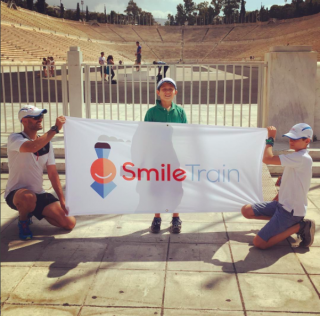
The Spartathlon is one of the toughest ultra races to gain entry into. Limited to only 390 athletes, the 153-mile course takes runners from Sparta to Athens in Greece. Ultrarunner Alex Anyse is one of 21 Americans selected for this year’s race, which begins on Friday, Sept. 29. However, Anyse’s goal is not just to finish. He wants to raise as much as he can for the non-profit organization Smile Train in the process.
Smile Train is the world’s largest cleft charity, providing free, safe, high-quality surgery and comprehensive cleft care for children. Anyse is part of Team Empower, the organization’s charity endurance program. His goal for the Spartathlon is to raise $38,250—a smile for every mile run.
“I always say that Smile Train brought me to running and running brought me to Smile Train. When you find a cause that means a lot to you, and you know that every mile counts and can help change a child’s life, it can make the physical challenge more manageable,” Anyse said in a statement.
To gain entry into the Spartathlon, Anyse ran a 100-mile race in under 20 hours. From there, he was selected among other qualified athletes from around the world. Anyse also hasn’t just been running to train for his ultra. In June, he summited Mount Kilimanjaro, the highest free-standing mountain in the world. All of this has prepared him to take on 153 miles in a race that only one third of those who enter finish.
“During most of the long runs, I make an effort to smile and remind myself that I made a decision to take this on. When it’s difficult, I think about the children,” Anyse said.
Check out Anyse on Instagram to follow along the race this weekend. To learn more about Smile Train and to donate, visit mysmiletrain.org.
RELATED: Fenway Park Marathon Raises $320,000 For The Red Sox Foundation
The post Ultrarunner To Compete In 153-Mile Race For Charity Smile Train appeared first on Competitor.com.
September 26, 2017
Read the October 2017 Digital Edition of Competitor Running Magazine
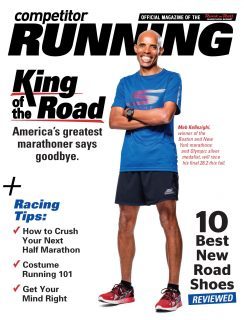
Our October issue’s main story features none other than America’s greatest and most recognizable marathoner Meb Keflezighi. On Nov. 5, Meb will be running his 26th and final marathon in New York City, where he ran his first marathon ever in 2002. We reflect on the incredible legacy he’ll leave behind, along with his top five career highlights, and what’s next after he retires. Also in this issue: The season’s best road shoes and racing tips for how to crush your next half marathon.
Find our print edition at a location near you with the store locator.
The post Read the October 2017 Digital Edition of Competitor Running Magazine appeared first on Competitor.com.
Ryan Hall's Blog
- Ryan Hall's profile
- 21 followers





